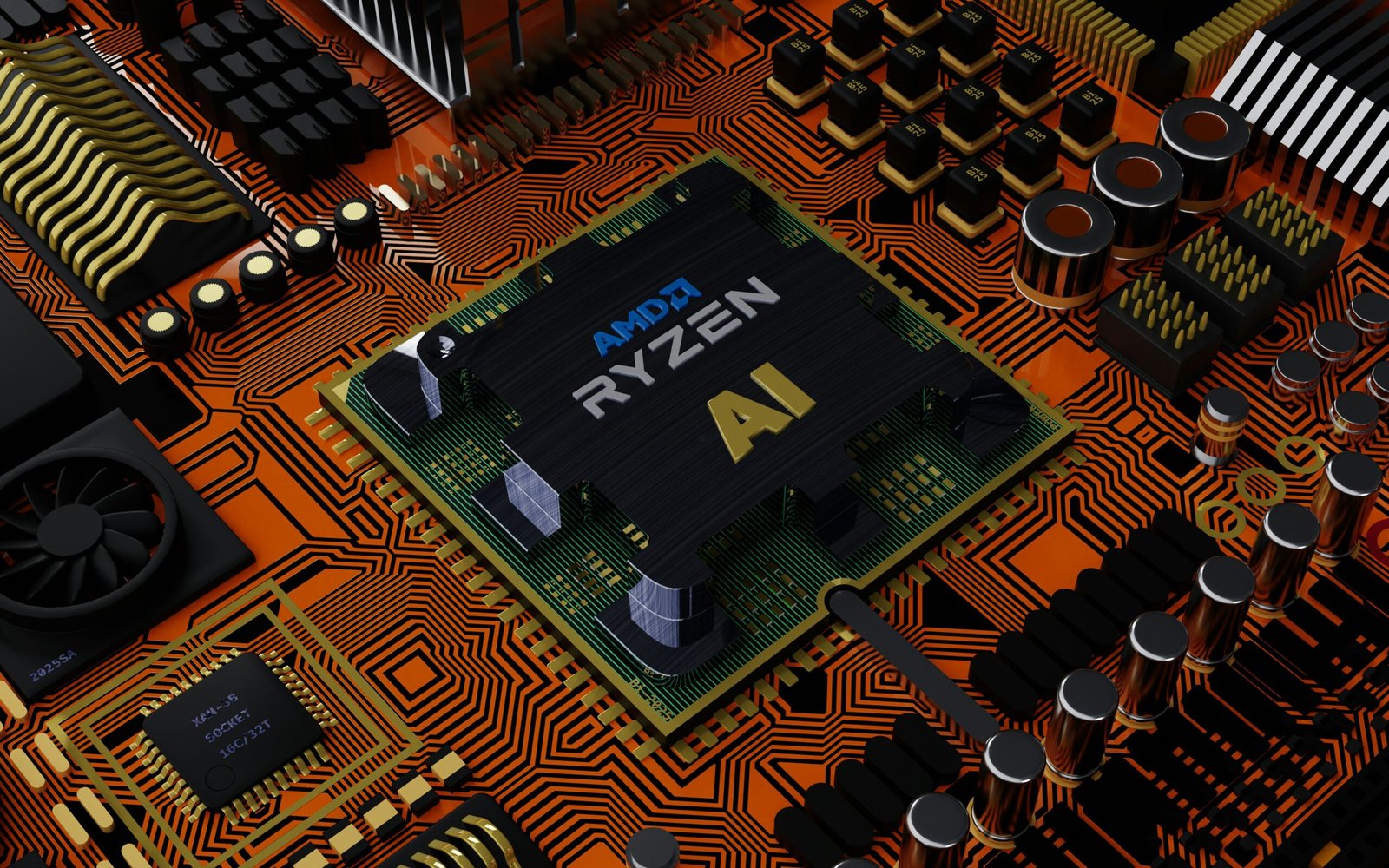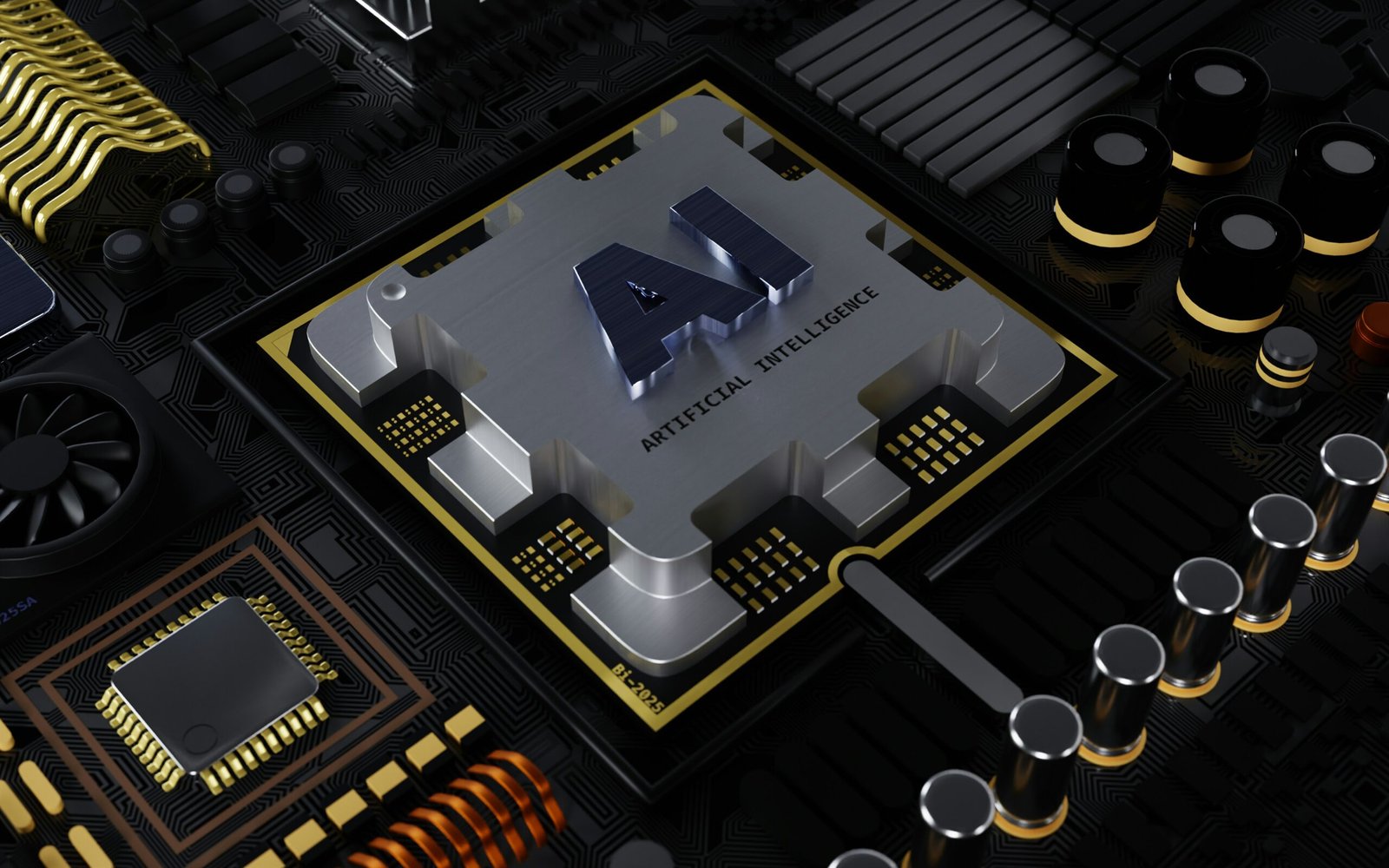
Introduction to Edge Computing
Edge computing has emerged as a transformative paradigm in data processing, revolutionizing how data is handled and analyzed. Unlike traditional cloud computing, which primarily relies on centralized data centers, edge computing processes data closer to where it is generated. This decentralized approach addresses several limitations associated with cloud computing, such as latency, bandwidth constraints, and the need for real-time processing. Edge computing origins trace back to the necessity for more efficient and responsive data handling techniques in the face of burgeoning data volumes and increasing demand for immediate analytics.
The basic premise of edge computing involves deploying computing resources and services at or near the data source. For instance, instead of sending all data from an IoT device to a remote server for processing, edge computing enables analysis to occur on the device itself or at a nearby local server. This minimizes the delay in data processing and allows for more immediate insights and actions, which is critical in scenarios like autonomous vehicles, smart grids, and industrial IoT applications where milliseconds can make a substantial difference.
The significance of edge computing has grown remarkably in recent years for various reasons. Firstly, the explosion of Internet of Things (IoT) devices has led to an exponential increase in data creation, necessitating more efficient ways to process and analyze this information swiftly. Secondly, modern applications increasingly require low-latency responses that centralized clouds cannot always provide. Lastly, with concerns over data security and privacy, processing data locally can mitigate risks associated with transmitting sensitive information over long distances.
As organizations continue to generate enormous amounts of data, edge computing stands out as a critical solution to address the growing need for more agile, secure, and efficient data processing methodologies. Understanding its role and benefits is essential for businesses looking to stay competitive in a data-driven landscape.
The Need for Edge Computing
In the current digital era, the rapid proliferation of Internet of Things (IoT) devices has been a significant driving force behind the adoption of edge computing. The exponential increase in connected devices has led to an unprecedented surge in data generation. This enormous volume of data necessitates a paradigm shift in how it is processed and managed. Traditionally, data processing has been centralized, with data being transmitted to and handled by remote cloud servers. However, the limitations of this model have become increasingly evident.
One of the most critical limitations is latency. Given the considerable distance that data often needs to travel from devices to central servers, there is an inherent delay in response times. In applications requiring real-time processing, such as autonomous vehicles, industrial automation, and healthcare, even minor delays can have significant consequences. Edge computing mitigates this issue by processing data closer to the source, thereby minimizing latency and ensuring that real-time data processing is both feasible and efficient.
Additionally, the sheer volume of data generated by IoT devices can strain network bandwidth when centralized processing is employed. Edge computing offers a solution by reducing the amount of data that needs to be transmitted over the network. By processing and filtering data locally, only essential information is sent to the central servers, alleviating bandwidth congestion and optimizing overall network performance.
Data sovereignty is another vital consideration driving the adoption of edge computing. In an era of stringent data protection regulations, organizations must ensure that data, especially sensitive information, remains within designated geographic boundaries. Edge computing facilitates compliance by processing data locally, thereby respecting data residency requirements and protecting organizational and consumer privacy.
Lastly, edge computing enhances real-time data processing capabilities. By enabling data to be analyzed and acted upon at the edge of the network, organizations can respond more swiftly and efficiently to dynamic conditions and operational demands. This method not only enhances the agility and resilience of systems but also unlocks new possibilities for innovation and competitiveness in various sectors.
Architectural Components of Edge Computing
Edge computing encompasses an array of architectural components that harmonize to process data closer to its source. Among these components, edge devices, edge servers, and gateways stand as the foundational pillars. Edge devices, including sensors, IoT devices, and smart appliances, serve as the primary data generators. Positioned at the periphery of the network, they collect vast amounts of data from various environments, such as industrial settings, smart homes, and urban infrastructures.
Central to the architecture are edge servers, which are strategically placed at the edge of the network, proximate to edge devices. These servers possess substantial computing power to manage and analyze incoming data. Unlike traditional cloud servers that may be geographically remote, edge servers ensure rapid data processing with minimal latency. The proximity advantage enables real-time computation and immediate feedback, essential for applications requiring instantaneous responsiveness.
Gateways act as intermediaries, bridging the gap between edge devices and edge servers. They perform preliminary data aggregation, pre-processing, and protocol translation, effectively filtering out irrelevant data and reducing the volume of information transmitted to edge servers. This process alleviates the network load and enhances the efficiency of data transmission.
A crucial aspect of edge computing involves edge analytics and edge AI. Edge analytics refers to the real-time analysis of data at the edge of the network. It empowers immediate decision-making by processing and interpreting data directly where it is generated, thus circumventing the delays inherent in sending data to central cloud servers for analysis. This capability is particularly salient in environments demanding swift analysis and response, such as autonomous vehicles and smart healthcare systems.
Edge AI integrates artificial intelligence with edge computing infrastructure, enabling intelligent data processing and decision-making locally. It leverages machine learning models deployed on edge servers and applications, fostering advanced functionalities like predictive maintenance, anomaly detection, and natural language processing. By conducting AI-driven analytics at the edge, organizations not only enhance operational efficiency but also bolster data privacy and security, as sensitive information remains localized.
Benefits of Edge Computing
Edge computing offers numerous advantages that are transforming the way data is processed. One of the primary benefits is reduced latency. By processing data closer to its source, edge computing minimizes the delay between data generation and processing, leading to significantly improved response times. This is particularly beneficial for applications that require real-time data processing, such as autonomous vehicles and industrial automation.
Another key advantage is the efficiency in bandwidth utilization. By handling data locally, edge computing reduces the amount of data that needs to be transmitted over long distances to centralized data centers. This not only helps in minimizing bandwidth consumption but also speeds up the data handling process, making the system more efficient overall.
Increased reliability is also a significant perk of edge computing. With data processed near its point of origin, there’s less dependency on continuously available high-speed internet connections. This improves the overall reliability of data processing, particularly in remote or less-developed locations where robust internet infrastructure might be lacking.
Cost savings often stem from the operational efficiencies gained through edge computing. Since less data is transmitted over the network, organizations can save on bandwidth costs. Moreover, the need for expensive, high-capacity central data centers is reduced, as more processing power can be distributed across edge devices.
Edge computing also paves the way for advanced applications like autonomous vehicles and smart cities. For instance, self-driving cars require real-time data analysis to make instantaneous decisions. Processing this data at the edge ensures faster response and decision-making capabilities. Similarly, smart cities rely on a multitude of interconnected devices that generate vast amounts of data. Edge computing enables these devices to process data locally, ensuring quicker and more effective responses to real-time events.
In summary, edge computing offers a range of advantages including reduced latency, improved response times, enhanced bandwidth efficiency, increased reliability, and cost savings. These benefits are driving the adoption of edge technology across various industries, enabling the implementation of innovative applications such as autonomous vehicles and smart cities.
Challenges and Limitations
Despite the transformative potential of edge computing, its implementation is not without challenges and limitations. One of the primary concerns is security and privacy. As data processing occurs closer to the source, the risk of unauthorized access to sensitive information increases. For instance, in healthcare, patient data processed near the data collection point could be vulnerable to breaches if security measures are insufficient. Thus, robust encryption and stringent access controls are paramount to safeguarding data.
Another significant challenge is the complexity of managing edge computing resources. Unlike centralized data centers, edge devices are distributed across various locations, making it difficult to monitor, maintain, and update the infrastructure effectively. The need for sophisticated management tools and protocols to ensure seamless operation adds another layer of complexity to edge computing.
Data consistency also poses a substantial hurdle. Ensuring that data remains consistent across multiple edge devices and central servers can be daunting, especially in applications demanding real-time data processing, such as autonomous vehicles and industrial automation. Discrepancies in data can lead to operational inefficiencies or, worse, critical system failures.
Additionally, the requirement for robust infrastructure cannot be overstated. Edge computing necessitates highly reliable hardware and networking capabilities to perform efficiently. This requirement can be particularly challenging in remote or underdeveloped regions where access to advanced infrastructure is limited. For instance, implementing edge computing in rural agricultural settings may face obstacles such as poor internet connectivity and lack of local technical expertise.
Integration with existing systems presents another challenge. Many organizations have legacy systems that may not be compatible with new edge computing solutions. Industry-specific challenges also arise, such as in manufacturing, where integrating edge computing with traditional manufacturing execution systems (MES) requires significant modifications and investments.
Key Use Cases of Edge Computing
Edge computing has emerged as a pivotal technology across various industries, transforming the way data is processed and services are delivered. One of the prominent sectors benefiting from edge computing is healthcare, particularly in remote patient monitoring. By deploying edge devices closer to patients, healthcare providers can collect and analyze critical health data in real-time. This capability not only improves patient outcomes through timely interventions but also alleviates the burden on centralized servers, enhancing overall system efficiency.
In the manufacturing industry, predictive maintenance is revolutionized by edge computing. Machines equipped with edge sensors can monitor their own performance and identify potential issues before they become critical. This predictive capability drastically reduces downtime and maintenance costs, leading to increased operational efficiency and prolonged equipment lifespan. By processing data locally, manufacturers can make swift decisions, optimizing production lines and maintaining high-quality standards.
Retailers are also leveraging edge computing to create enhanced customer experiences. With the proliferation of Internet of Things (IoT) devices, stores can gather data on customer behavior, preferences, and purchasing patterns directly at the edge. This real-time data enables personalized marketing, dynamic pricing, and improved inventory management. Consequently, retailers can deliver a more tailored shopping experience, boosting customer satisfaction and loyalty.
The transportation sector, particularly in the realm of autonomous vehicles, epitomizes the transformative power of edge computing. Autonomous vehicles rely on real-time data processing to make instantaneous decisions ranging from route optimization to collision avoidance. By utilizing edge computing, these vehicles can process vast amounts of sensor data locally, ensuring swift and accurate responses to dynamic driving conditions. This local processing not only enhances the safety and efficiency of autonomous vehicles but also reduces the dependency on cloud infrastructures, minimizing latency.
Across these industries, edge computing is driving innovation and operational efficiency. By bringing data processing closer to the source, businesses can harness real-time insights, enhance system reliability, and offer superior services, ultimately leading to transformative advancements and competitive advantages in their respective fields.
Future Trends and Innovations
Edge computing is rapidly evolving, propelled by several technological advancements and innovative trends. One of the most significant drivers of change is the roll-out of 5G technology. The high-speed, low-latency capabilities of 5G are set to enhance edge computing by providing faster and more reliable data transmission. This will enable edge devices to process and analyze data locally in real time, thus reducing the dependency on centralized data centers and paving the way for more efficient and scalable data processing solutions.
Advancements in edge Artificial Intelligence (AI) are also key to the future of edge computing. Edge AI refers to the deployment of machine learning algorithms directly on edge devices, allowing for the immediate processing of data. This reduces latency, enhances real-time decision-making, and optimizes bandwidth usage. Innovations in hardware, such as specialized AI chips designed for edge devices, are further accelerating this trend. These chips consume less power while delivering high computational capabilities, making them suitable for a range of applications from autonomous vehicles to smart cities.
Another emerging area in edge computing is edge security. With an increasing number of devices being deployed at the edge, ensuring robust security measures is paramount. Future trends indicate a move towards more sophisticated security protocols that can identify and mitigate threats in real time. Techniques such as decentralized security frameworks, blockchain technology, and advanced encryption methods are being explored to secure data at the edge. These innovations not only protect sensitive information but also build trust among users and stakeholders.
Looking ahead, these trends are likely to shape the future of data processing significantly. The integration of 5G, advancements in edge AI, and stronger edge security measures present new business models and opportunities. Industries such as healthcare, manufacturing, and retail stand to benefit from enhanced data analytics, operational efficiencies, and improved customer experiences. As edge computing continues to evolve, it promises to transform the way data is processed, bringing about a paradigm shift in technological capabilities and applications.
Conclusion
Edge computing is significantly reshaping the landscape of data processing, offering profound benefits that are essential for modern businesses. By enabling data processing at or near the source of data generation, edge computing reduces latency, enhances real-time analytics, and ensures greater operational efficiency. These benefits are crucial as the demand for faster and more efficient data handling continues to grow, particularly with the advent of IoT and the increasing complexity of data ecosystems.
Throughout this discussion, the fundamental aspects of edge computing have been highlighted, including its impact on reducing bandwidth usage, improving data security, and enabling more scalable and resilient systems. Embracing edge technologies allows organizations to handle large volumes of data more effectively, make quicker decisions, and enhance customer experiences through more responsive applications and services.
Looking ahead, edge computing will undoubtedly continue to evolve, driven by advancements in AI, machine learning, and 5G technologies. These developments will further amplify its capabilities, making it possible to process larger datasets and derive more sophisticated insights at the edge. Sectors such as healthcare, manufacturing, retail, and smart cities will particularly benefit from the heightened efficiency and minimized latency provided by edge solutions.
Businesses aiming to stay competitive must explore and adopt edge computing as a strategic initiative. By integrating edge technologies into their operations, companies can not only stay ahead in the technology curve but also unlock new potential for innovation and growth. As data processing needs become increasingly complex, the role of edge computing in creating streamlined, responsive, and intelligent systems will become even more critical.



